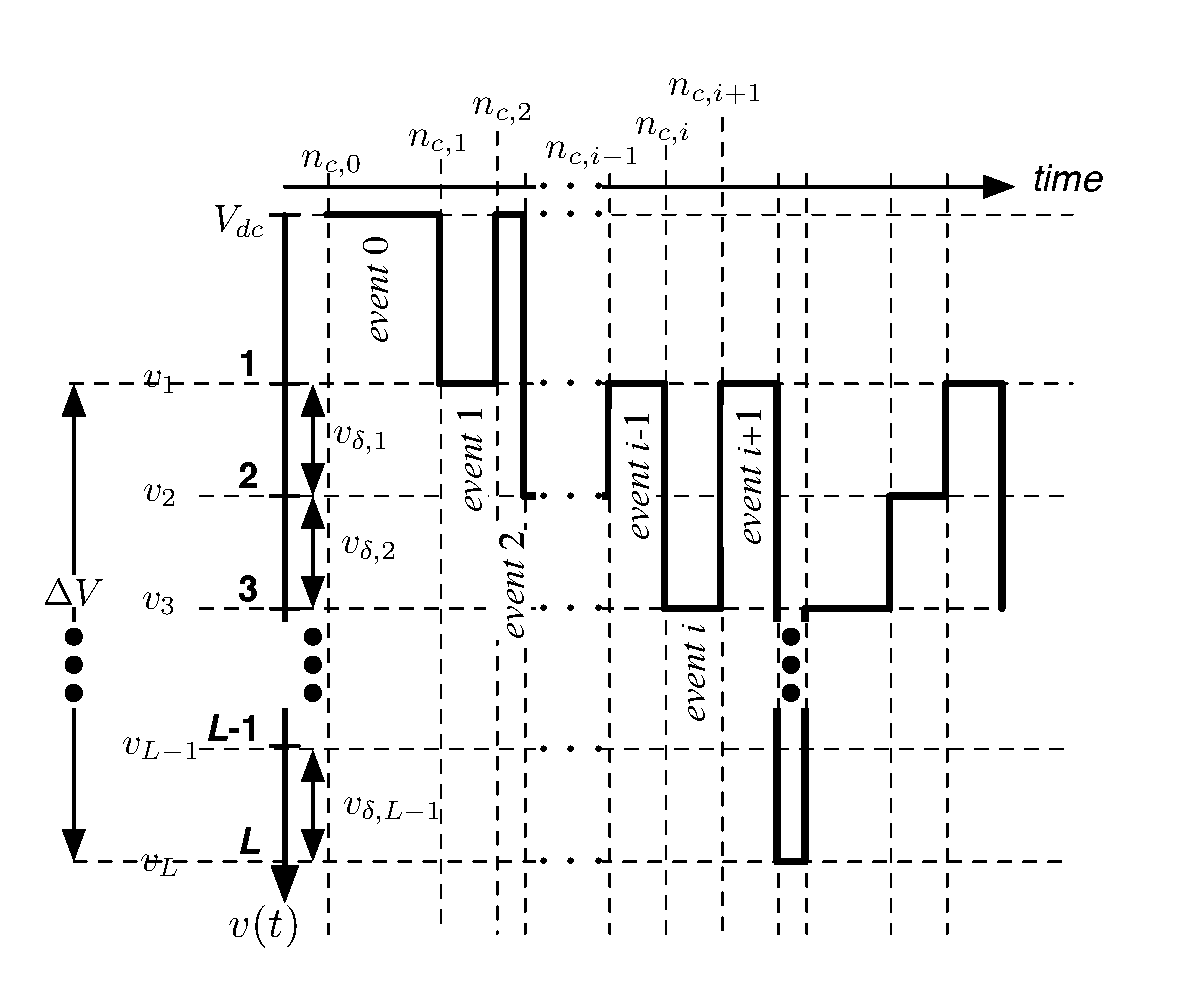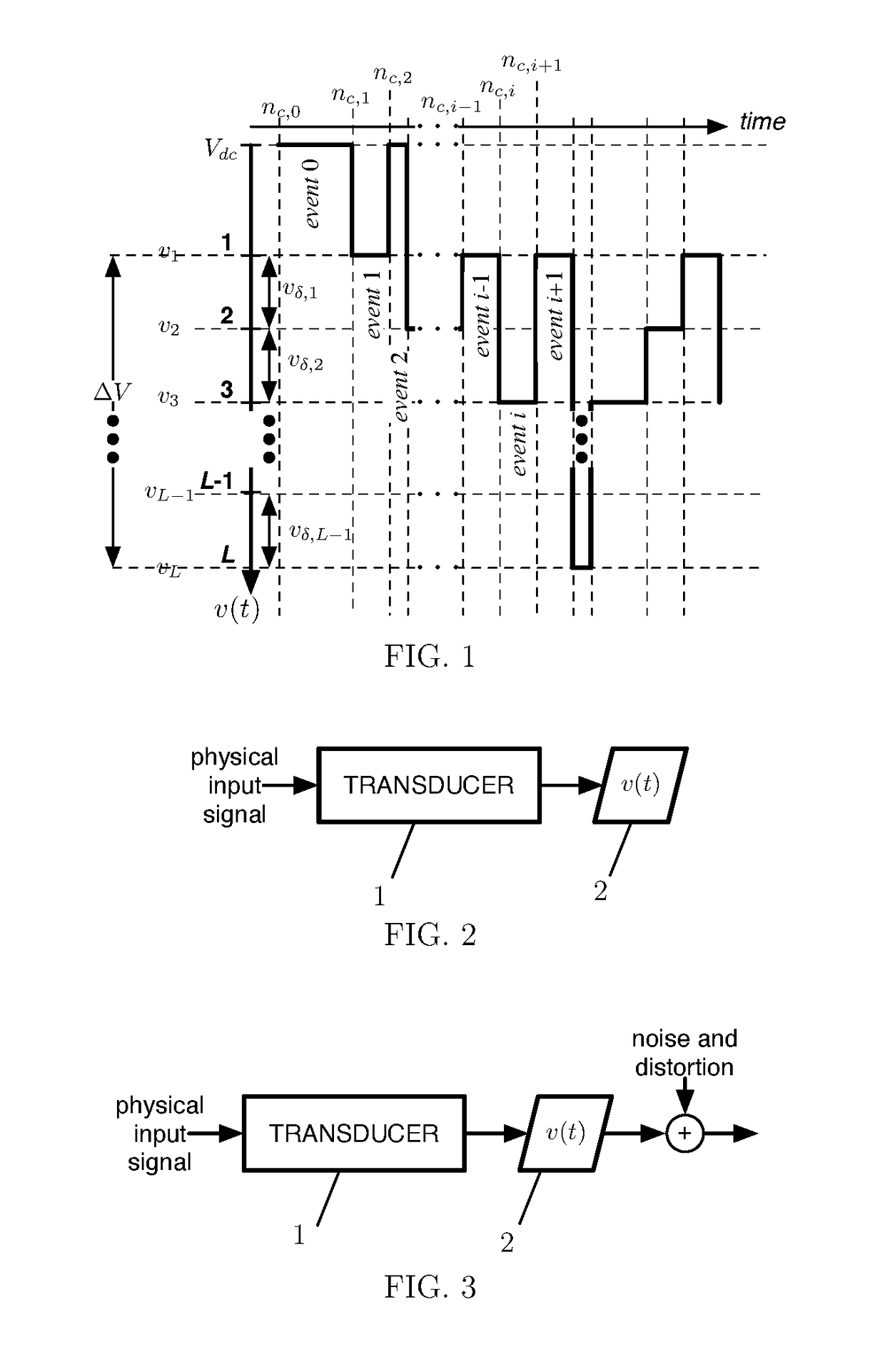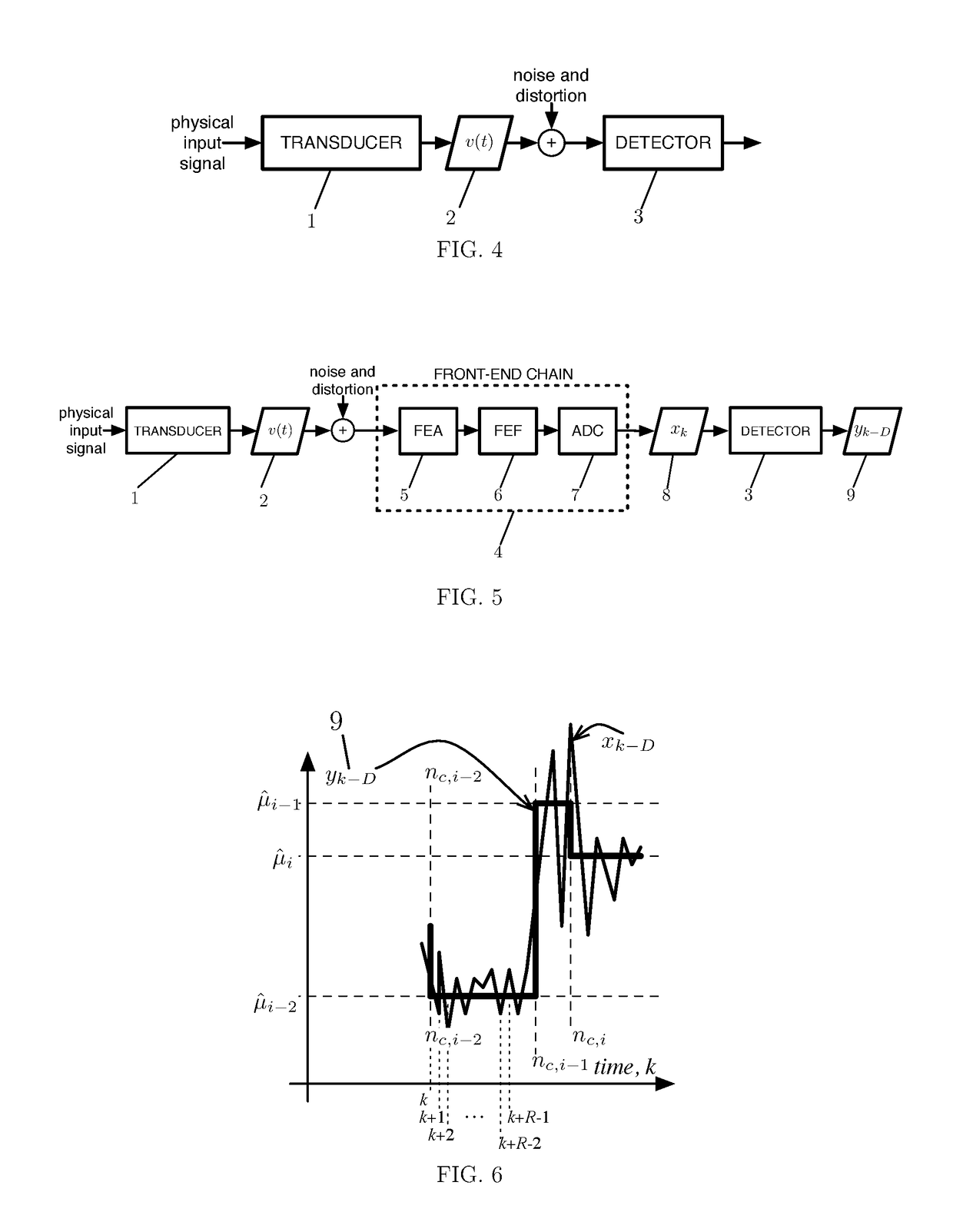On-Line Signal Event Detection and Identification Method and Apparatus
a technology of applied in the field of online signal event detection and identification method and apparatus, can solve the problems of increasing cost, compromising system portability, and inability to achieve adequate detection and identification, so as to achieve accurate detection and identification of the underlying signal, increase hardware resources, and increase cost
- Summary
- Abstract
- Description
- Claims
- Application Information
AI Technical Summary
Benefits of technology
Problems solved by technology
Method used
Image
Examples
Embodiment Construction
[0047]Following below are more detailed descriptions of various concepts related to, and embodiments of, inventive methods and apparatus for on-line high-speed signal event detection and identification. It should be appreciated that various concepts introduced above and detailed below may be implemented in any of a number of ways as the disclosed concepts are not limited to any particular manner of implementation.
[0048]FIG. 5 illustrates, in an exemplary context not meant to be limiting, a more detailed signal reception scheme of the detector [3], the unit responsible for the online detection and identification of high-speed signals. The exemplary arrangement shown comprises of a transducer [1] and front-end chain [4]. This arrangement is just one possible configuration of a detector [3] within a system intended to process external signals and is not meant to be limiting. For example, the front-end chain [4] may be entirely dispensed with and the detector [3] attached directly to th...
PUM
 Login to View More
Login to View More Abstract
Description
Claims
Application Information
 Login to View More
Login to View More - R&D
- Intellectual Property
- Life Sciences
- Materials
- Tech Scout
- Unparalleled Data Quality
- Higher Quality Content
- 60% Fewer Hallucinations
Browse by: Latest US Patents, China's latest patents, Technical Efficacy Thesaurus, Application Domain, Technology Topic, Popular Technical Reports.
© 2025 PatSnap. All rights reserved.Legal|Privacy policy|Modern Slavery Act Transparency Statement|Sitemap|About US| Contact US: help@patsnap.com



